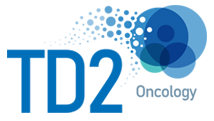Early-phase oncology trials are essential to the study of cancer and the development of new drugs because they provide crucial information on the efficacy, safety, and potential of these treatments. Phase I studies are particularly important in this regard as they are the first step in evaluating experimental medications on human volunteers. To ensure that patient safety remains the first priority, the major goal of Phase I trials is to establish the drug's Maximum Tolerable Dose (MTD) or Recommended Phase II Dose (RP2D). Researchers can determine the maximum dose that can be delivered to patients without having any negative side effects or harming them by carefully evaluating the safety and tolerability of various dose levels.
What is a rule-based approach in early-phase oncology?
In early-phase oncology, a rule-based approach refers to a method of dose escalation and de-escalation in clinical trials that follows predefined rules or criteria. The objective of this approach is to determine the Maximum Tolerated Dose (MTD) or Recommended Phase II Dose (RP2D) of an investigational drug, which is the highest dose that can be given to patients without causing unacceptable side effects or toxicity. Some of the most common test designs that fall under this approach are the 3+3 design and the modified 3+3 design.
What are 3+3 and modified 3+3 designs?
The 3+3 and modified 3+3 designs are examples of the rule-based approach commonly used in early-phase oncology trials. In the 3+3 design, three patients are initially enrolled at a specific dose level. If none of these patients experience dose-limiting toxicities (DLTs), the trial proceeds to enroll additional patients at the next higher dose level. If one patient experiences a DLT, three more patients are enrolled at the same dose level. If two or more out of six patients experience DLTs, the trial stops escalating the dose, and the MTD is considered reached.
The modified 3+3 design incorporates adaptations and statistical techniques to enhance the efficiency and safety of the dose-finding process. It may use Bayesian methods or other adjustments to make more informed decisions during dose escalation or de-escalation, allowing researchers to make better-informed decisions throughout the trial. As a result, the modified 3+3 design enhances the trial's overall efficiency and can reduce the number of patients exposed to potentially less effective or unsafe doses.
What are the benefits and limitations of rule-based approach?
The rule-based approach used in early-phase oncology trials, like the 3+3 and modified 3+3 designs, has some advantages. It's easy to understand and follow because it follows specific rules for deciding how much of the new drug to give patients. This approach prioritizes patient safety by being cautious about the doses used in the trial. It helps find the right dose for the drug quickly, allowing researchers to move on to the next stages of testing faster, which could speed up the development of new cancer treatments.
However, the rule-based approach also has some drawbacks. It can be too cautious, meaning it may take longer to find the best dose for the drug because it relies on certain rules even if there might be better options. The approach also requires testing more patients, which can make the trial larger and take more time. Another limitation is that it doesn't change or adapt based on new information during the trial, which could mean missing out on potential improvements. While it focuses on patient safety, it might not explore all possible effective doses, which could raise ethical concerns about the best treatment for patients. Researchers need to carefully consider these benefits and limitations when choosing how to find the right dose of a new cancer treatment.
Conclusion
Early-phase oncology trials, particularly Phase I studies, play a vital role in advancing cancer research and the development of new drugs. These trials are critical in providing essential information about the efficacy, safety, and potential of experimental treatments. To ensure patient safety remains the primary concern, a rule-based approach, such as the 3+3 and modified 3+3 designs, is commonly employed to determine the Maximum Tolerated Dose (MTD) or Recommended Phase II Dose (RP2D) of investigational drugs. While this approach offers advantages in terms of simplicity, safety prioritization, and expedited dose finding, it also presents limitations, such as potential inefficiency, larger trial sizes, and lack of adaptability. To strike the right balance between patient safety and efficient drug development, researchers must carefully weigh the benefits and drawbacks of the rule-based approach when determining the appropriate dose for new cancer treatments. By doing so, we can continue making strides in cancer research and improve patient outcomes.



